Recent Water Damage Posts
Where Water Leaks Like to Hide | SERVPRO of Lakeland
4/1/2024 (Permalink)
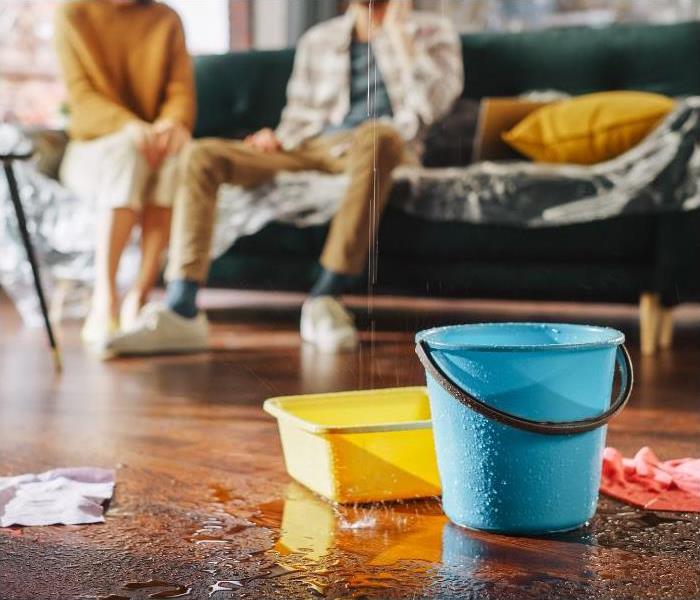 Quick action is crucial for a complete recovery from water damage. Call SERVPRO of Lakeland today for a fast response!
Quick action is crucial for a complete recovery from water damage. Call SERVPRO of Lakeland today for a fast response!
Water leaks aren't always as obvious as a burst pipe or a flooded basement; they can be insidious, like a slowly dripping pipe hidden behind walls or a water heater that leaks intermittently. Despite their stealthy nature, these leaks can wreak havoc over time.
Regardless of the scenario, water damage is a serious issue that demands attention. Detecting leaks early is key, but knowing where to look is the first step.
Identifying Common Leak Sites
Water flows throughout your home, so leaks can spring up anywhere there's a pipe or water connection. Loose fittings or deteriorating caulking can spell trouble. Regularly inspect toilets, sinks, and tubs for signs of moisture or persistent puddles.
Appliances that rely on water are also prone to leaks. Dishwashers, washing machines, and water heaters can all spring leaks unexpectedly. Check these appliances before each use for signs of moisture around doors and connections.
Halting the Flow
Upon discovering moisture or a new puddle, take immediate action to prevent further damage. Locate the source of the leak and shut off the appropriate water valve to stop the flow. If the leak originated from an appliance, turn it off or unplug it to prevent reactivation.
Avoid walking through the water, and contact us immediately. If there's significant water or the leak went unnoticed, you may have additional damage to address. Document the damage with photos for your insurance company.
Water Damage Restoration
We'll swiftly arrive at your home, pinpoint the leak source, and commence water removal and necessary repairs. We understand the urgency; prolonged exposure to water can exacerbate damage and promote mold growth. Our advanced drying equipment ensures thorough moisture removal.
Once dry, we'll tackle any necessary repairs. Water can warp wood and damage walls or carpet, but we're equipped to handle restoration projects of any scale. Our priority is restoring your home to its preloss condition promptly.
Contact SERVPRO of Lakeland immediately to start restoring your property.
Why regular water inspections are important.
3/9/2023 (Permalink)
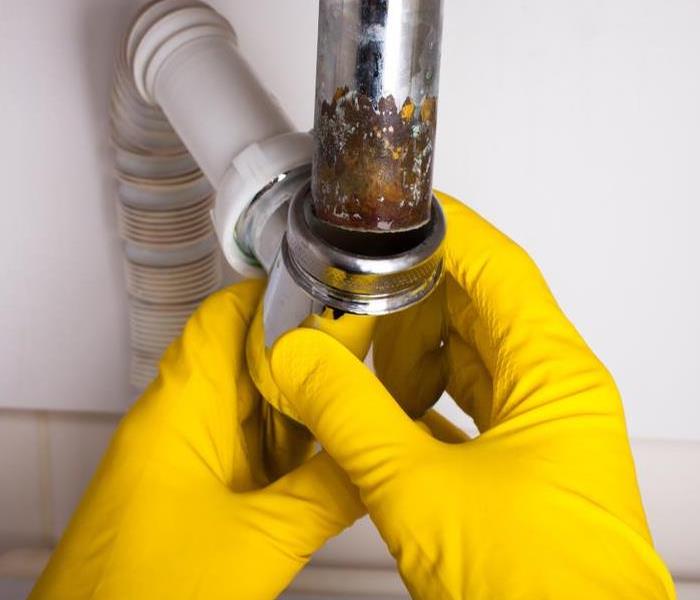 Check pipes frequently to protect your property against water damage.
Check pipes frequently to protect your property against water damage.
Water damage can be expensive. It's not just about the cost of replacing your carpet and furniture, it's also about the cost of cleaning up water damage and secondary damages.
Regular water inspections are an important part of maintaining a healthy home environment by preventing mold growth from occurring inside or outside of buildings where people live or work each day including schools, hospitals/healthcare facilities etc.
Quick fixes aren't always the best option
The first step to fixing any problem is to recognize it. When you notice your water is not as clean and clear as it should be, it's time to take action.
Regular inspections can help prevent costly problems down the road by identifying potential issues before they become big problems. By conducting regular tests and inspections, you'll be able to spot problems before they get out of hand, so they can be addressed in a timely manner instead of after-the-fact when they've already damaged your property or equipment.
Quick fixes aren't always worth their cost. Sometimes a more comprehensive approach will pay off better over time. SERVPRO is the leader in the water restoration industry.
Water damage can lead to mold and mildew.
Mold is a fungus that feeds on organic matter, such as dead plants or leftover food. The mold can grow in excess of 15 square feet and produce spores that spread throughout the air. If you have water damage from a leaky roof or pipe burst, mold may be present in your home!
Mildew is a more localized version of mold that grows on fabrics like carpeting, towels and clothing.
It's easier to prevent water damage than repair it.
Water damage can be expensive, but you don't have to suffer the consequences. If your home has been damaged by water, there are steps you can take to make sure that it doesn't happen again.
Take care of any leaks before they become major problems. Leaks in pipes and pipes that run under floors or ceilings often cause major issues for homeowners because they have nowhere else to go but through walls and ceiling and those are not easy places for repairs.
Never ignore signs of mold or mildew. If you see any kind of blackening on walls or ceilings near sinks or showers
Water Damage Repair Costs.
The average cost per square foot for replacing drywall in an ordinary size room is $2-$5 per square foot (depending on the type of material used). This means that if you've got a small bathroom with about 10 feet x 15 feet worth of drywall being replaced then it would cost around $200-$400 just for materials alone!
In some cases when dealing with mold or mildew growths within walls we recommend using professional contractors who specialize in these types of projects. The professionals know how much time will be needed during this stage before getting started again once everything has been cleaned up properly over time. Proper ventilation is important to help reduce cost by preventing secondary damages to your property by hiring the professionals at SERVPRO of Lakeland.
Water damage can be hard to detect, but it's still important to make sure you know what to do. Call the professionals at SERVPRO of Lakeland if your home or business suffers from a water loss.
DIY Water Restoration in my home?
1/27/2023 (Permalink)
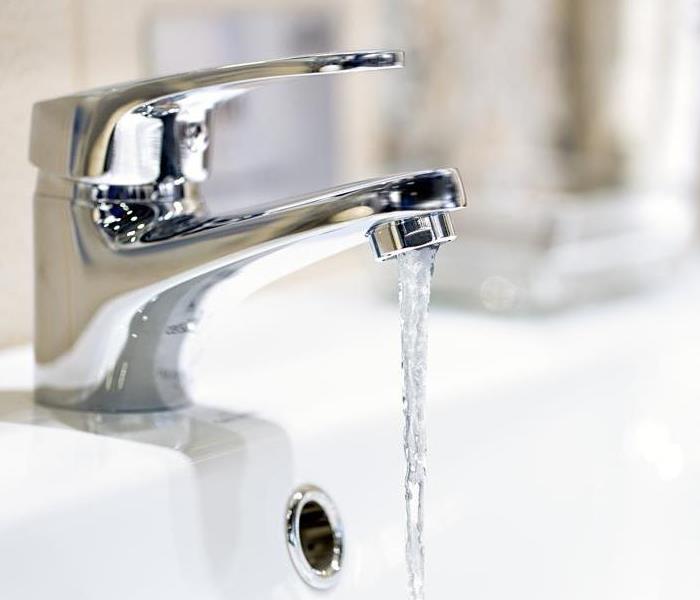 When your home suffers from a water loss, give SERVPRO of Lakeland a call today.
When your home suffers from a water loss, give SERVPRO of Lakeland a call today.
Water damage can be devastating, but it's also preventable. If you're looking to restore your home after an unfortunate incident, consider hiring a professional water restoration company. These experts have the equipment necessary to remove water and ensure your space is restored back to pre loss conditions.
Structural Components
Structural components of the home can easily rot when exposed to water. Wood, metal and concrete are all susceptible to decay and damage. When these materials are in contact with water for extended periods of time, they can become weakened and eventually rot away completely. Water can also cause paint to peel off walls, flooring to warp, drywall cracks and more.
Professional Equipment
Professional restoration companies have equipment for removing water. They have industrial dryers and dehumidifiers that can be used to speed up the drying process, which helps prevent mold and secondary damages.
They also use specialized equipment for removing water from walls and floors, furniture, electronics and other items in your home.
In addition to dehumidifiers and industrial dryers, water damage restoration companies also use desiccants. Desiccants are chemicals that absorb moisture from the air and can be used in conjunction with a dehumidifier or an industrial dryer. The moisture-absorbing powers of these products make them ideal for restoring water damage.
Save you Time and Money
Water damage can be a big problem. It can lead to secondary damage and expensive repairs, not to mention mold growth and structural damage.
To protect your property from further damage by water, while waiting on the professionals it’s important to begin drying out the affected area immediately after the water emergency. Remove all items damages, and use any type of fan or dehumidifier to help dry the damages to prevent further damage.
Water damage can be devastating to a home or business. If you experience water damage, it is important that you seek the help of professionals right away. Avoid the DIY approach and hire a restoration company who will get your property back to normal pre loss conditions quickly and affordable.
Does a Leaking Faucet Always Lead to Mold?
11/5/2022 (Permalink)
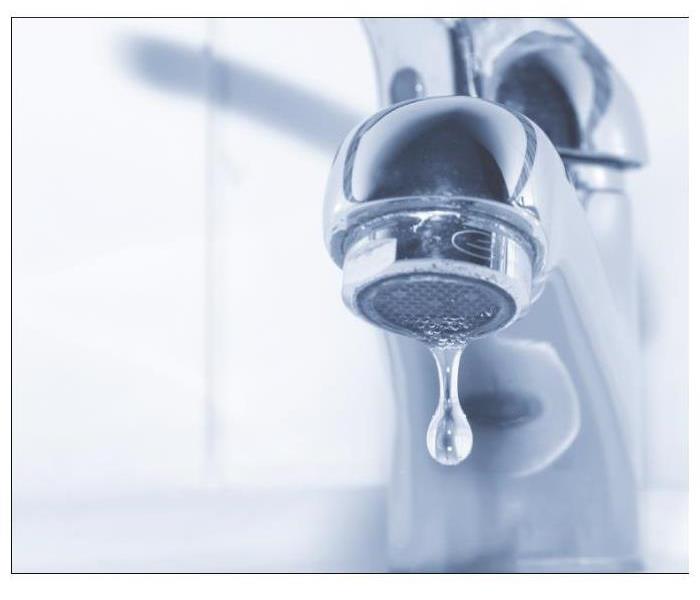 If you have a dripping faucet, then mold could be growing in your home
If you have a dripping faucet, then mold could be growing in your home
Does a Leaking Faucet Always Lead to Mold?
You're at home relaxing when you hear a drip coming from the kitchen sink. You walk over to investigate, expecting to see water leaking out of the faucet, but instead, you find a small puddle of water on the floor. What happened? How did that puddle get there? And is it dangerous? You've probably heard of mold. It's a type of fungus that can grow on almost any material, as long as there is water or moisture present. Some molds are harmless, but others can be toxic and cause serious problems.
In this article, we'll explain what could be causing your leaky faucet and how it could cause mold growth in your home.
How can a leaking faucet cause mold?
A leaking faucet may not immediately lead to mold, but it can certainly be the perfect environment for it to grow. If water is left to sit for a long time, the spores of various types of molds will begin to form. These spores are often carried by air or on the fur of animals. They can also be carried through dust particles in the air after being disturbed on other surfaces.
Once these spores have been introduced into a Lakeland, FL home, they'll begin to grow and thrive if conditions are right—such as warm temperatures and humidity levels above 50 percent. The moisture from a leaking faucet can provide just such an environment!
How to tell if you have a mold problem.
You can tell if you have a mold problem by looking for certain signs. If you see black spots or stains, water damage, and discoloration in areas where there was no moisture before, or musty smells that seem to be growing stronger over time, then it's likely that mold is present.
What to do if you have a mold problem.
If you have a mold problem, it's time to call in the pros. A professional can help you determine what is causing your leak and fix it in a safe and efficient manner. They will also be able to assess whether or not more extensive repairs are needed and advise you on how to deal with any further mold problems that may arise as a result of the leak.
A dripping faucet can lead to mold - but sometimes it won't, depending on the situation.
Mold spores are everywhere: in the air we breathe, on the food we eat, inside our homes on items like carpeting and drywall, and they're especially common under floorboards. Sometimes it grows outdoors in places like forests or gardens where there is plenty of moisture - this type of mold is called "saprophytic" which means it feeds off dead organic matter like leaves or roots from plants rather than live ones (like mushrooms do).
If you have a leaky faucet in your Lakeland home, then in theory yes - there could potentially be some mold growth around that area. Especially if the humidity levels are high enough for long enough periods of time.
If you have a dripping faucet, then mold could be growing in your home. If you notice spots on your walls or ceiling or smell an unusual odor coming from somewhere in the house, then it's time to call a professional and get the leak fixed ASAP.
Supply Line Maintenance in Your Bathroom
7/11/2022 (Permalink)
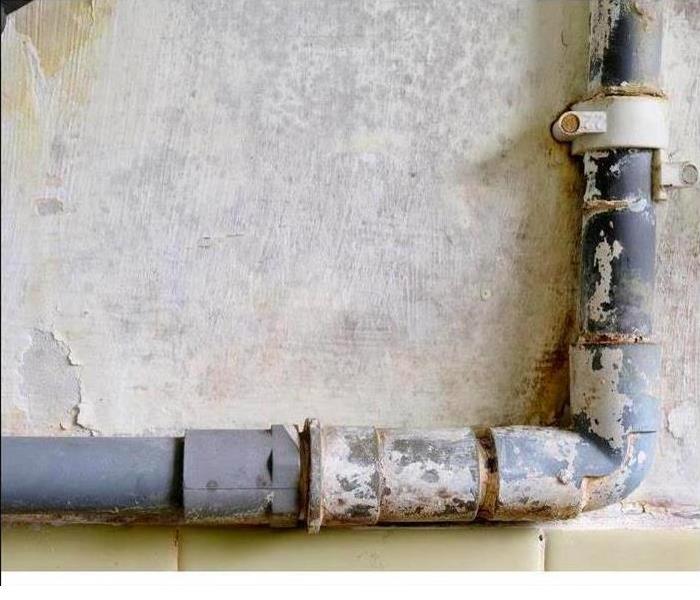 A supply line refers to the pipes that carry water into your home
A supply line refers to the pipes that carry water into your home
Bathroom Supply Line Maintenance
A supply line refers to the pipes that carry water into your home. There are main lines that normally measure 3/4 an inch in diameter and go to an appliance such as the water heater, and branch lines that measure 1/2 inch in diameter and go to individual sinks, bathtubs, and fixtures. It is important that the supply lines are in good shape and that they are made of the proper materials such as PVC, copper, stainless steel, or PEX piping. Supply line damage results for many different reasons: pipes are too old, they freeze and burst, they are damaged by an obstruction or they have bad connections.
Simple Maintenance
When a supply line leak happens in your bathroom in Dixieland, FL, you have two main options: fix it yourself or call a licensed plumbing contractor. With a simple bathroom leak, where the problem is accessible, you can fix the problem in an afternoon with the following steps:
- Locate the problem
- Shut off the water
- Remove the piping with a wrench
- Buy the correct amount of new pipe
- Connect the new pipe to the fixture and turn the water back on
Supply line damage comes in many forms, though, and not every problem will be simple. Leaks are sometimes located behind walls or in other inaccessible places. Complicated issues should be left to the professionals.
Complex Water Damage
It's possible that you won't immediately discover supply line damage. The leak could be hidden or in an area that you don't frequent every day. A large or longstanding leak will likely require the services of a local water remediation team. Qualified mitigation specialists will assess the situation and take appropriate action. This often involves water removal with the help of wet vacuums and a program of drying and ventilation. Where damage to flooring and drywall has occurred, it may be necessary to restore and replace materials. The job is finished when your home is restored to its original condition.
What To Know About Water Damage and Homeowners' Insurance
4/25/2022 (Permalink)
 Call SERVPRO, we are located close by and ready to respond to your water damage emergency, 24 hours a day, 7 days a week.
Call SERVPRO, we are located close by and ready to respond to your water damage emergency, 24 hours a day, 7 days a week.
Water Damage and Homeowners' Insurance: What You Should Know
You may expect that your homeowners' insurance will cover any water damage claim you make. However, that is not the case. Insurance does pay for professional restoration services following a sudden emergency such as bursting pipes. However, other types of losses may be excluded from coverage. Before you make a claim with your insurance provider, you should know which emergencies are included in a typical policy.
Gradual Damage
As its name implies, gradual damage occurs over time. Water losses typically fall into these categories. That is because much of your plumbing system is hidden behind walls and floors. It could take weeks or months for the problem to become visible. Some examples of gradual damage include:
- Rot and corrosion
- Consistently leaking pipes or faucets
- Foundation cracks that allow water to enter your home
Homeowners' insurance usually excludes losses that result from gradual damage. However, you should check your policy or talk to your adjuster to find out the specifics of your coverage.
There are some exceptions to the gradual damage exclusion, as well. Insurance does not pay for the cost to fix broken pipe. Yet the coverage should include any harm caused by bursting pipes. This is called resulting damage. The same is true for malfunctioning washing machines or water heaters.
Sudden Damage
Sudden damage, meanwhile, occurs when there is an unexpected discharge of water into your Polk County, FL, home. This could result from cracks in your hot water heater or excessive snow and sleet crushing your roof. If this accident was not caused by your negligence, it should be covered under your insurance policy.
Insurance usually does not pay for costs related to gradual damage. It thus will not help you replace broken pipes that have been leaking for a long time. Your policy may cover the harm caused by bursting pipes, however. Any sudden and accidental discharges of water should also be included.
Floor to Ceiling Water Mitigation
2/2/2022 (Permalink)
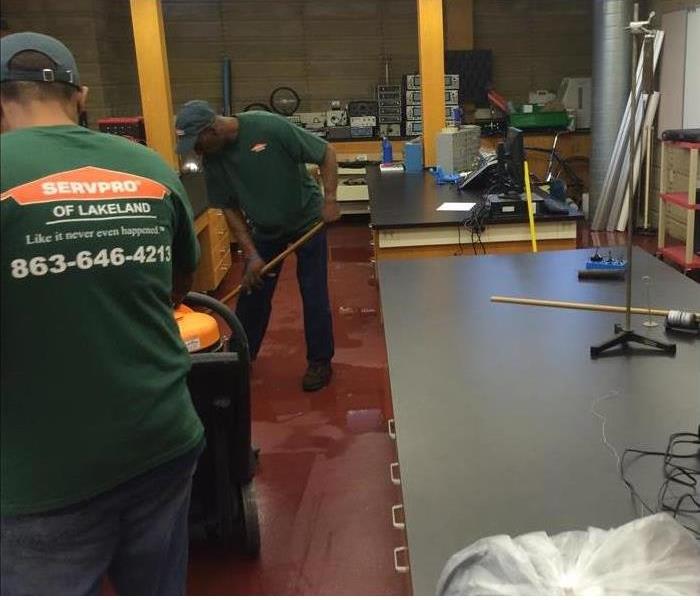 Day or Night. Holiday or Business Day. We have your back if catastrophe strikes. Call SERVPRO when you need it!
Day or Night. Holiday or Business Day. We have your back if catastrophe strikes. Call SERVPRO when you need it!
Water Mitigation From Floor To Ceiling
Business owners or site managers in Polk County, FL who are unfortunate enough to experience a water damage event usually want to get the problem dealt with as quickly and quietly as possible. However, it makes much more sense to do a thorough and methodical cleanup and restore the affected elements of your building.
Secondary issues, such as black mold and pest problems, might arise from even clean water sources. Pipe burst cleanup is important, so check your building from top to bottom, especially if you have:
- Water pipes
- Damaged water supply lines
- Unexplained clean water flooding
Floor Concerns
When a supply line or pipe breaks, it's important to start thinking from the ground up. The first task after stopping the water source is, of course, to remove any standing water. After that, proper removal, cleanup and drying procedures can start.
In the Walls
One of the reasons you should take special care with burst pipes is their location. Many pipes are near to or embedded in walls. It's important to go through a rigorous damage mitigation procedure if one of these breaks, especially if it's in an awkward position. Walls might need to be removed, or sections might need to be replaced. If pipe burst cleanup is done correctly, you might feel like your whole building is being ripped apart. However, you should be able to enjoy normal operations again as soon as everything is dried and refurbished.
Up in the Air
A supply line leaking might cause problems in multi-floor buildings that appear to be coming from the next floor up. In fact, the issue might be between the floors. Water cleanup procedures are relatively similar in these cases, but they take place on the ceiling.
Nobody in Polk County, FL, wants to see their building ripped up, but these pipes burst cleanup steps are often necessary to save you and your stakeholders from further complications down the road. Even if it seems hectic right after the flood event, everything should be back to new relatively quickly with the right cleanup crew.
Use Chemical Drain Cleaners Cautiously
1/4/2022 (Permalink)
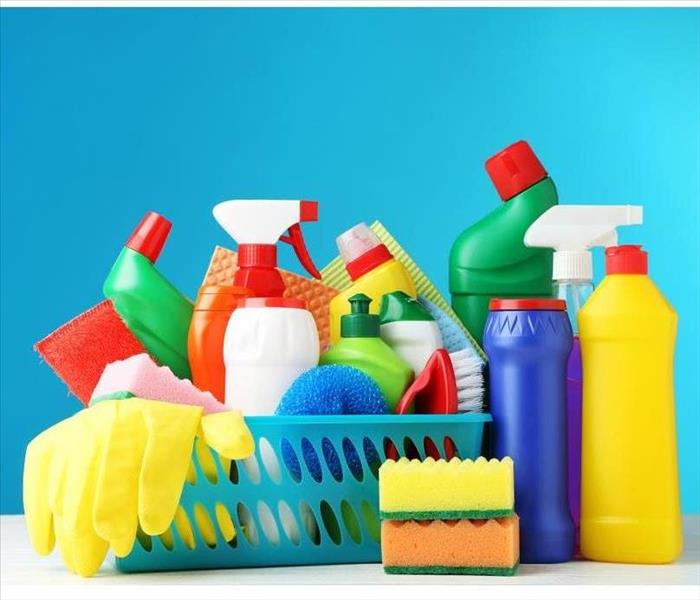 When you find water or sewage damage in your home, be sure to call the trained experts at SERVPRO for mitigation services.
When you find water or sewage damage in your home, be sure to call the trained experts at SERVPRO for mitigation services.
Chemical Drain Cleaners Should Be Used With Caution
It’s easy to understand why people look to chemicals for a clogged drain. Use them, and there is no need to pay a plumber or purchase and use plumbers’ tools. Unfortunately, it’s not quite that simple.
Never Use a Chemical Cleaner on a Completely Blocked Drain
Television advertisements would have you believe that clearing a clogged drain is simple. Apply the chemicals, the sewer blockage disappears and the toxic chemicals go with it. This process may work in see-through glass pipes and cartoon simulations, but it overlooks the real-world problems.
Chemical cleaners are highly corrosive, generate large amounts of heat and are very toxic to humans and the environment. It is these characteristics that make them unsuitable for use in a blocked sewer. Consider the following:
- Corrosive chemicals can weaken or damage metal pipes. Corrosion occurs naturally over time. Drain cleaners speed up this process. If a pipe leaks while it contains toxic material, the leaked liquid poses extreme health and environmental hazards.
- Heat can damage plastic pipes. They don’t corrode like metal, but they can fail due to excessive heat. If they start leaking, the risks are the same as with metal.
- If your chemical drain cleaner doesn’t work, don’t try a different one. Adding more toxic chemicals would be a terrible idea. Doing this might create a poisonous gas which would require evacuation and a visit from the Dixieland, FL Hazardous Material Unit.
- Toxic chemicals make the plumber’s job more dangerous. If all else fails, call the plumber. Hopefully, the plumber can fix your blockage without disturbing the pipes. However, if new pipes become necessary, the plumber must take great care to avoid chemical exposure.
The Worst-Case Scenario Is That the Blocked Sewer Pipe Fails
The sewage and toxic chemicals in the clogged drain have flooded your beautiful home. Sewage cleaning calls for a team of sewage and contamination removal technicians to remediate the problem. They will make your home look “Like it never even happened”.
 Quick action is crucial for a complete recovery from water damage. Call SERVPRO of Lakeland today for a fast response!
Quick action is crucial for a complete recovery from water damage. Call SERVPRO of Lakeland today for a fast response!





 24/7 Emergency Service
24/7 Emergency Service






